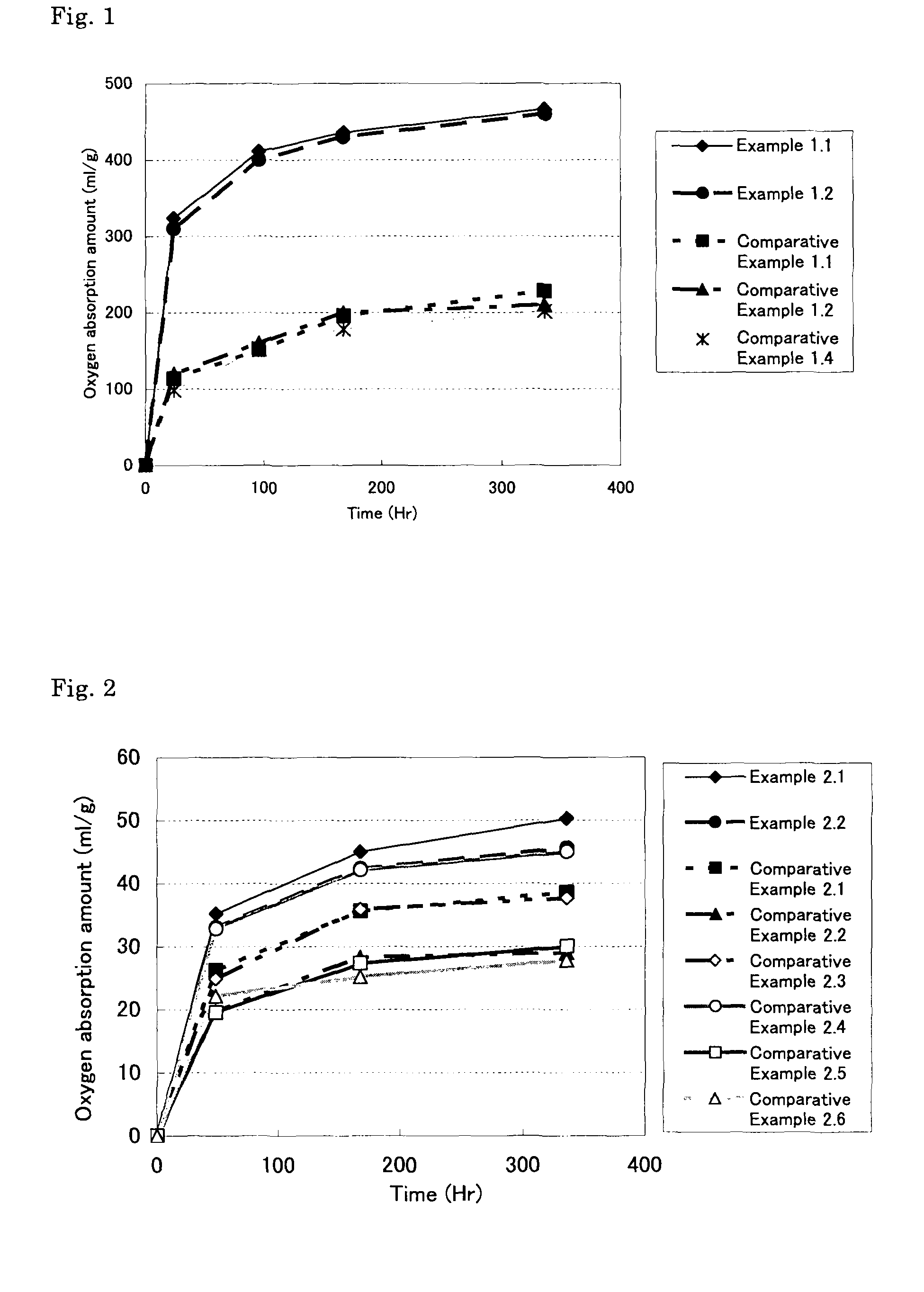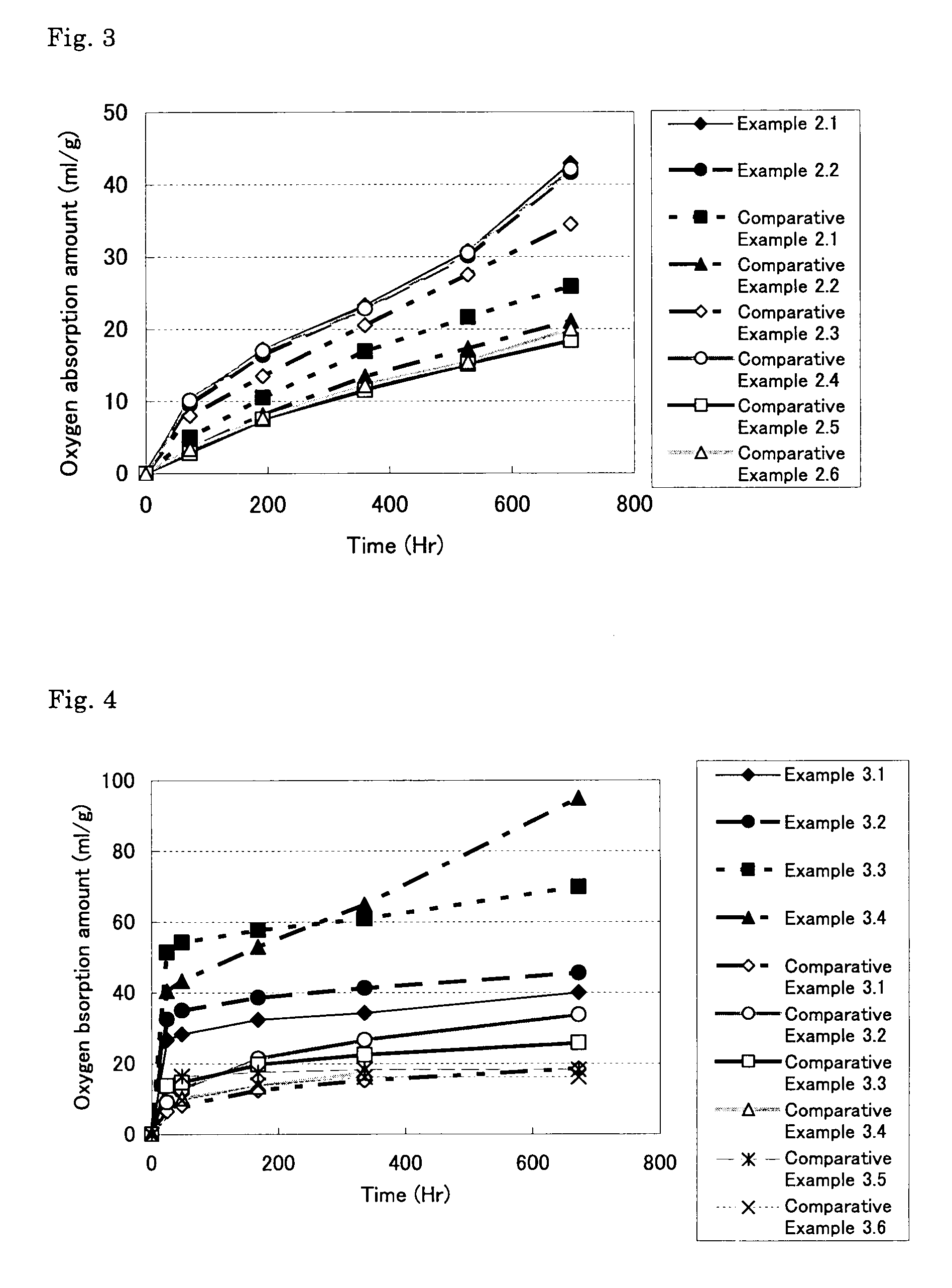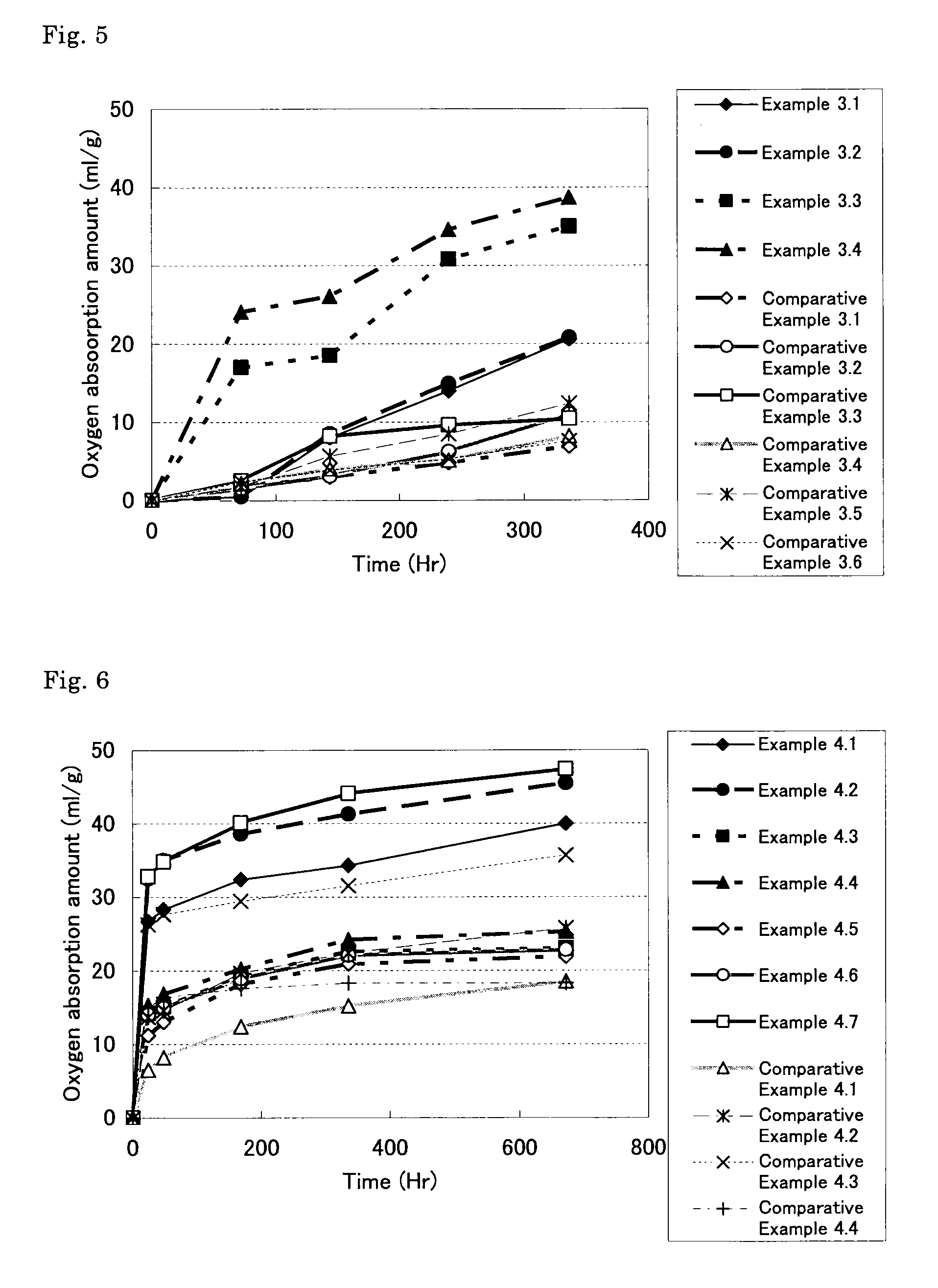Oxygen-absorbing resin composition
a technology of oxygen-absorbing resin and composition, which is applied in the direction of synthetic resin layered products, packaging, textiles and paper, etc., can solve the problems of unpleasant odor, gas that cannot be absorbed, and oxygen absorbent decomposition, and achieve excellent oxygen absorption, good handling properties, and high initial oxygen absorption rate
- Summary
- Abstract
- Description
- Claims
- Application Information
AI Technical Summary
Benefits of technology
Problems solved by technology
Method used
Image
Examples
synthesis example 1
Synthesis of Polyoctenylene (A-1)
[0233]A 5 L glass three-neck flask equipped with a stirrer and a thermometer was purged with dry nitrogen, and then was charged with 624 g of heptane in which 110 g (1.0 mol) of cis-cyclooctene and 187 mg (1.7 mmol) of cis-4-octene were dissolved into the flask.
[0234]Then, a catalyst solution in which 8.48 mg (10 μmol) of benzylidene (1,3-dimesitylimidazolidin-2-ylidene) (tricyclohexylphosphine) ruthenium dichloride had been dissolved in 1 g of toluene was prepared, and this solution was added quickly to the heptane solution to effect ring-opening metathesis polymerization at 70° C. Five minutes later, analysis was performed by gas chromatography (GC-14B manufactured by Shimadzu Corporation; column: G-100 manufactured by Chemical Product Inspection Society), and it was confirmed that the cis-cyclooctene had disappeared.
[0235]Then, 600 g of methanol was added to the resultant reaction mixture and stirred at 40° C. for 30 min. Thereafter, the mixture w...
synthesis example 2
Synthesis of Polyoctenylene (A-2)
[0236]The same operation was performed as in Synthesis Example 1 except that the amount of cis-4-octene was 374 mg (3.3 mmol), and a polymer having a weight average molecular weight of 89000 and containing an oligomer having a molecular weight of 1000 or less in a ratio of 8.7% was obtained in an amount of 91.5 g (yield: 83%). The ratio of trans structural unit in the main chain of this polymer (polyoctenylene (A-2)) was 76%. Moreover, in this polymer (polyoctenylene (A-2)), the ratio of carbon-carbon double bond in the side chains relative to the total carbon-carbon double bonds was 0%.
synthesis example 3
Synthesis of Polyoctenylene (A-3)
[0237]The same operation was performed as in Synthesis Example 1 except that the amount of cis-4-octene was 18.7 mg (0.17 mmol), and a polymer having a weight average molecular weight of 390000 and containing an oligomer having a molecular weight of 1000 or less in a ratio of 8.3% was obtained in an amount of 97.0 g (yield: 88%). The ratio of trans structural unit in the main chain of this polymer (polyoctenylene (A-3)) was 79%. Moreover, in this polymer (polyoctenylene (A-3)), the ratio of carbon-carbon double bond in the side chains relative to the total carbon-carbon double bonds was 0%.
PUM
| Property | Measurement | Unit |
|---|---|---|
| particle size | aaaaa | aaaaa |
| RH | aaaaa | aaaaa |
| total thickness | aaaaa | aaaaa |
Abstract
Description
Claims
Application Information
 Login to View More
Login to View More - R&D
- Intellectual Property
- Life Sciences
- Materials
- Tech Scout
- Unparalleled Data Quality
- Higher Quality Content
- 60% Fewer Hallucinations
Browse by: Latest US Patents, China's latest patents, Technical Efficacy Thesaurus, Application Domain, Technology Topic, Popular Technical Reports.
© 2025 PatSnap. All rights reserved.Legal|Privacy policy|Modern Slavery Act Transparency Statement|Sitemap|About US| Contact US: help@patsnap.com



